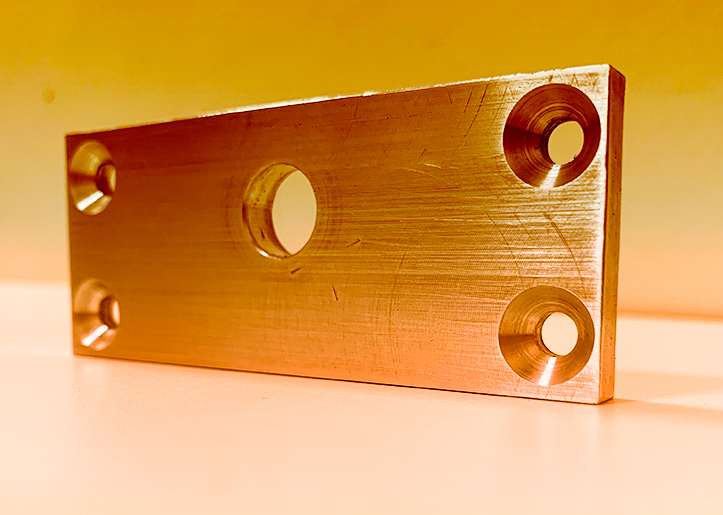Tempering is a heat treatment that is carried out on steel after hardening to achieve…

What is the countersinking process and what does it consist of? | EONSI
Countersinking is a machining technique that consists of making a conical recess in a workpiece. Read on to find out more about this process and its uses.
What is the countersinking process and what does it consist of?
Countersinking is a type of technique used to develop assemblies, smooth out indentations, and countersink holes in different types of material. It is often used so that the screws are countersunk at the same level as the surface being worked on.
What types of countersinking are there?
The countersinking process produces a smooth surface. This technique not only achieves a more aesthetically pleasing finish, but also allows the pressure of the screw to be better distributed over the surface, avoiding cracks or wear.
There are different types of countersinks depending on their design and shape, and they can have different shapes and dimensions depending on their application.
Conical countersinks
This conical and octagonal steel drill is the most common type of countersink. It consists of two inverted cones crossed by a diagonal hole and a cylindrical shank or, in the case of the conical flower countersink, we will have a countersink composed of several edges to facilitate centring. This type of countersink is usually used to widen the hole in the bore where a screw will be placed.
Depending on how the grooving is arranged, it will be a conical countersink for wood or for metal.
Cylindrical countersinks
These countersinks are shaped like a steel cylinder with a grooved surface and a square of iron at the end. They are also known as counterbores because the grooved part serves to smooth out the roughness left in the metal after drilling.
Cylindrical countersinks are used especially in metals, one of their most common uses is to profile and fix the barrels of firearms, although they are also often used to widen the holes made by drilling or to make the part on which the head of bolts must rest.
Flat Countersinks
This is a type of countersink that makes cuts perpendicular to the tool axis to obtain the desired shape in the drilled hole, which is a way of creating a flat-bottomed extension of an existing hole.
Flat countersinks in this case are used in metals and aluminium of different types to produce parts such as nuts, bolts or screws.
Spiral countersinks
These countersinks are characterised by a spiral countersink bit so that the hole is drilled and the countersinking follows.
It is specially designed to deburr wood in one step.
What is the metal countersinking process like?
For any countersinking process it is necessary to have the right material. For wood, a multi-functional drill with the specific features required to carry out the task is sufficient, but for the process of countersinking metals, more experience and technical skills are required, given that these are usually harder and more resistant materials. In addition, when drilling metal, a sharp burr is often formed that can injure an inexperienced operator.
In fact, this is one of the most common purposes of countersinking: the removal of this burr. However, these impurities can be removed with the help of a cylindrical countersink to prevent them from remaining on the workpiece.
Alternatively, countersinking can be carried out in the metal by creating a chamfer to allow the head of a screw to be positioned below the surface of the metal to achieve greater structural strength in the part. A tapered countersink is used in this case to match the size of the screw head to the chamfer.
Once the countersinking is complete, the part is screwed in and if the screw protrudes from the surface, it is removed and the countersink bit is reinserted to remove any burrs that prevent the screw from protruding.
It is important to remember to wear safety glasses throughout the process.
Mechanised countersinking experts
EONSI are the experts in the machined countersinking process. Contact us and we will provide you with advice from planning to production optimisation. We have many years of experience in drilling, threading and countersinking. We specialise in fast and efficient machining solutions for industrial processes.



